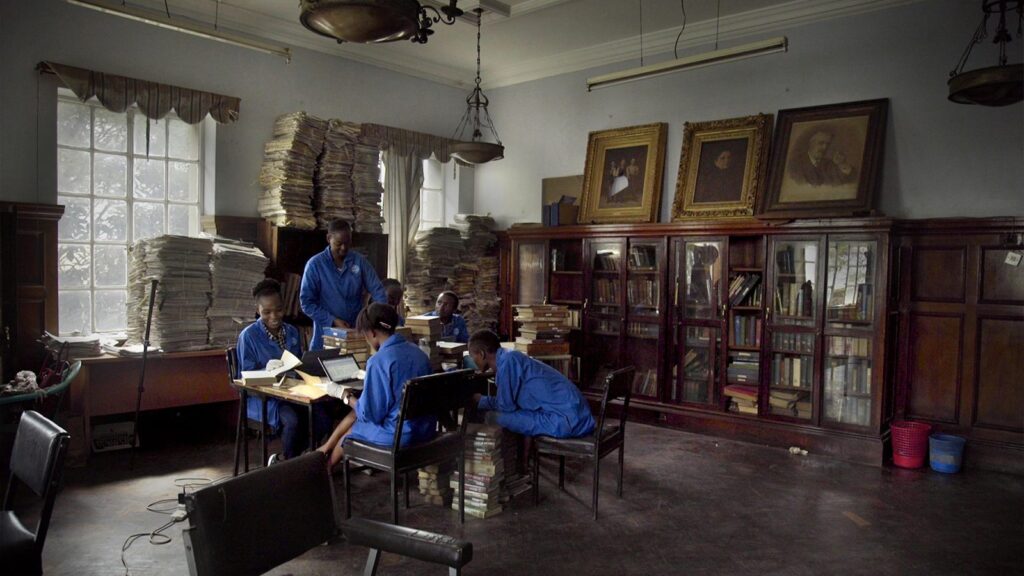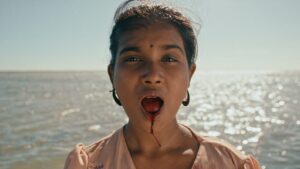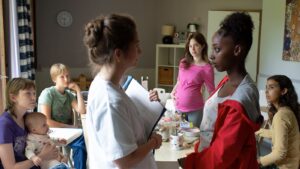Title: How To Build A Library
Foreign Title:
Year: 2025
Country: Kenya
Language: In English and Swahili with English subtitles
Directors: Christopher King, Maia Lekow
Having grown up in South Africa I can understand how difficult it is for most African countries that were part of the commonwealth and became independent, to completely breakaway from the shackles of colonization.
This wonderful documentary takes us through a journey made by 2 incredibly motivated friends Angela Wachuka, a former executive director of Kwani Trust and a leading figure for new African Voices, and Wanjiru Koinange (Shiro), an award-winning writer and the author of “The Havoc of Choice”. Together, they co-founded Book Bunk in 2017, an organization to rebuild libraries in Kenya.
The main library in Nairobi, The McMillan Memorial library was built in 1931 by an American British settler for the white population. It was only in 1958 that the library was made available for the African community, 5 years before Kenya gained independence. The library, a magnificent colonial structure, was in a terrible state with broken furniture and shelving, floors needing repair, and books, paintings and archival photographs scattered within many storage rooms on 2 floors. In 2017, the library had a chief librarian (Jacob) and a deputy, and several professionally trained librarians.
These two powerhouse friends had a daunting task ahead of them to transform the library into a library to represent all citizens with up-to-date literature, from both local and international authors, introduce computer technology, digitize the contents and decolonize the mainly British archival material and books that were currently in the library. They needed some major fundraising to repair the building and modernize.
Fund raising would not be easy as the County Govt had not invested any time, nor money in improving this main library and 2 separate satellite libraries in Makadara and Kaloleni constituencies. They also had no experience of working with the County Govt, who had their own agendas and were suspected of corruption.
However, they had some consultations with regulars at the library with some positive results and consulted with Jacob and the librarians. They also had an ally in the education minister who attended the first fundraiser and spoke. It was quite successful. They raised some funds and decided to first renovate the library at Kaloleni, which had a large children’s section.
Following the fundraiser, the librarians felt that they were snubbed at the event by the organizers and Jacob had to address the issue for more consultation. There was another situation where Shiro and Wachuka had some issues with the librarians on cataloguing (digitizing) as they wanted to change or modify the Dewey Decimal Classification System used by most public library systems. Both women felt that the system was too colonial in its classifications.
The opening of this smaller library was well received and finished in record time. Now they were in for the bigger plan to tackle the main library. They found a foundation that funded the repair of the building and modernization and surprised them with additional funds for more books for the main library. They also had secured some major donations from Britain and the U.S. and could start renovating and modernizing, even though the signing off by the County Govt was delayed with further conditions, but was eventually done.
Both Shiro and Wachuka are “larger than life” personalities. There were many moments in the film when they had doubts, or made errors in judgement, but their charm, friendship and energy made this documentary very entertaining at times.
The third stage fund raiser with a new governor was delightful and showed how vibrant African countries and its people can be. The duo had hoped for a 10-year plan to continue with funding the main library, but they could only secure a 5-year term of the contract. Added to this fundraiser was the visit of King Charles and Queen Camilla’s visit to the library. I am not sure of the date when Queen Elizabeth and the Duke visited Kenya, as shown in the archival scenes, but it must have been at least more than 50 years before this.
Kudos to the husband-and-wife director team for all the archival footage included in the film and making this documentary so exciting and interesting!




